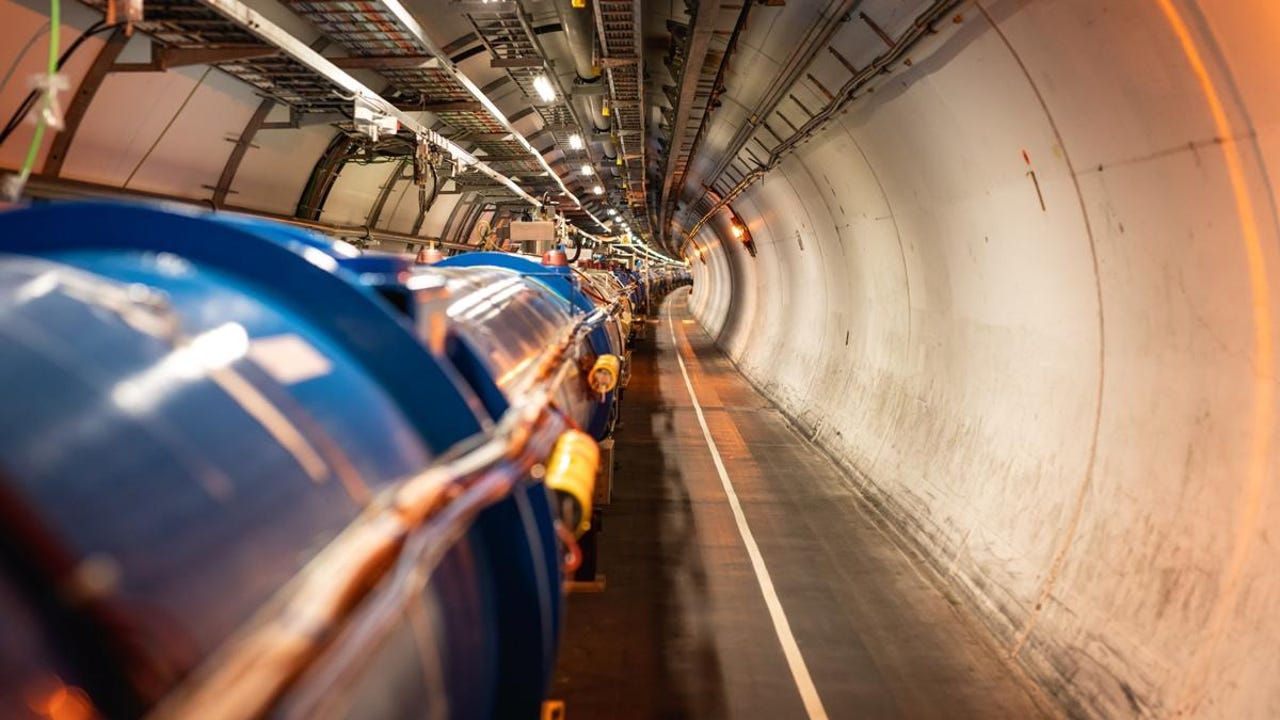
































The world's largest particle accelerator, the Large Hadron Collider, is back in action after a three-year break for maintenance and an upgrade with more energy, higher intensity beams and greater precision.
The LHC at CERN, outside of Geneva, is set to run 24/7 for nearly four years at a record energy of 13.6 trillion electronvolts. The upgrades should give LHC tools greater precision and allow for more particle collisions, brighter light and more discovery about particles in quantum field theory.
CERN used the LHC to discover the Higgs boson on July 4, 2012, before its first long shutdown. Back then, under LHC "Run 1", the LHC was operating at 3.5 trillion electronvolts (TeVs). Run 2 occurred between 2015 and 2018 with proton beams colliding 13 TeVs before the second long shutdown. Now it's time for Run 3 at 13.6 TeVs or 6.8 TeV per beam.
Also:On July 12, we'll see the universe like never before
Rende Steerenberg, head of the operations group in the LHC beams department, said that with 6.8 TeV for Run 3 it wants to push LHC up to "140 billion particles per package or per bunch." From 2023 onwards, it wants to increase this to 180 billion particles per packet. "This will of course give us many, many more collisions in the experiments."
An electronvolt is a measure of kinetic energy gained by an electron accelerating from rest. Hence the need for an accelerator like LHC with its 27km circumference, which accelerates hadron particles (such as lead, xenon and oxygen ions at different levels of the mass spectrum) in a way that forms two beams traveling in opposite directions, almost at the speed of light. The beams collide in the machine at four points or "detectors" called ATLAS, CMS, ALICE and LGCb, each of which focusses on measuring different types of hadron particles.
Now read: IBM and CERN use quantum computing to hunt elusive Higgs boson
It's the Higgs boson particle (or wave in quantum field theory) that's thought to give mass to the particles that form the basis of stars, planets and everything. When two electrons interact, for example, they exchange particles of light or photons that are the "force carriers" of an electromagnetic interaction, CERN explains.
The updated LHC will be able to create "stable beams", a condition allowing scientists to switch on all their subsystems for experiments, and begin taking data.
"We will be focusing the proton beams at the interaction points to less than 10 micron beam size, to increase the collision rate," says CERN's director for accelerators and technology, Mike Lamont.
"Compared to Run 1, in which the Higgs was discovered with 12 inverse femtobarns, now in Run 3 we will be delivering 280 inverse femtobarns1. This is a significant increase, paving the way for new discoveries."
CERN says it expects the ATLAS and CMS detectors to record more collisions during Run 3 than in the two previous runs combined.
Also: How 3D printing is helping CERN scientists upgrade the world's largest machine
The LHCb experiment underwent a complete revamp and looks to increase its data-taking rate by a factor of 10, while ALICE is aiming for a 50-fold increase in the number of recorded collisions.
Scientists hope to answers questions about the origin of the matter
 Hot Tags :
Innovation
Hot Tags :
Innovation